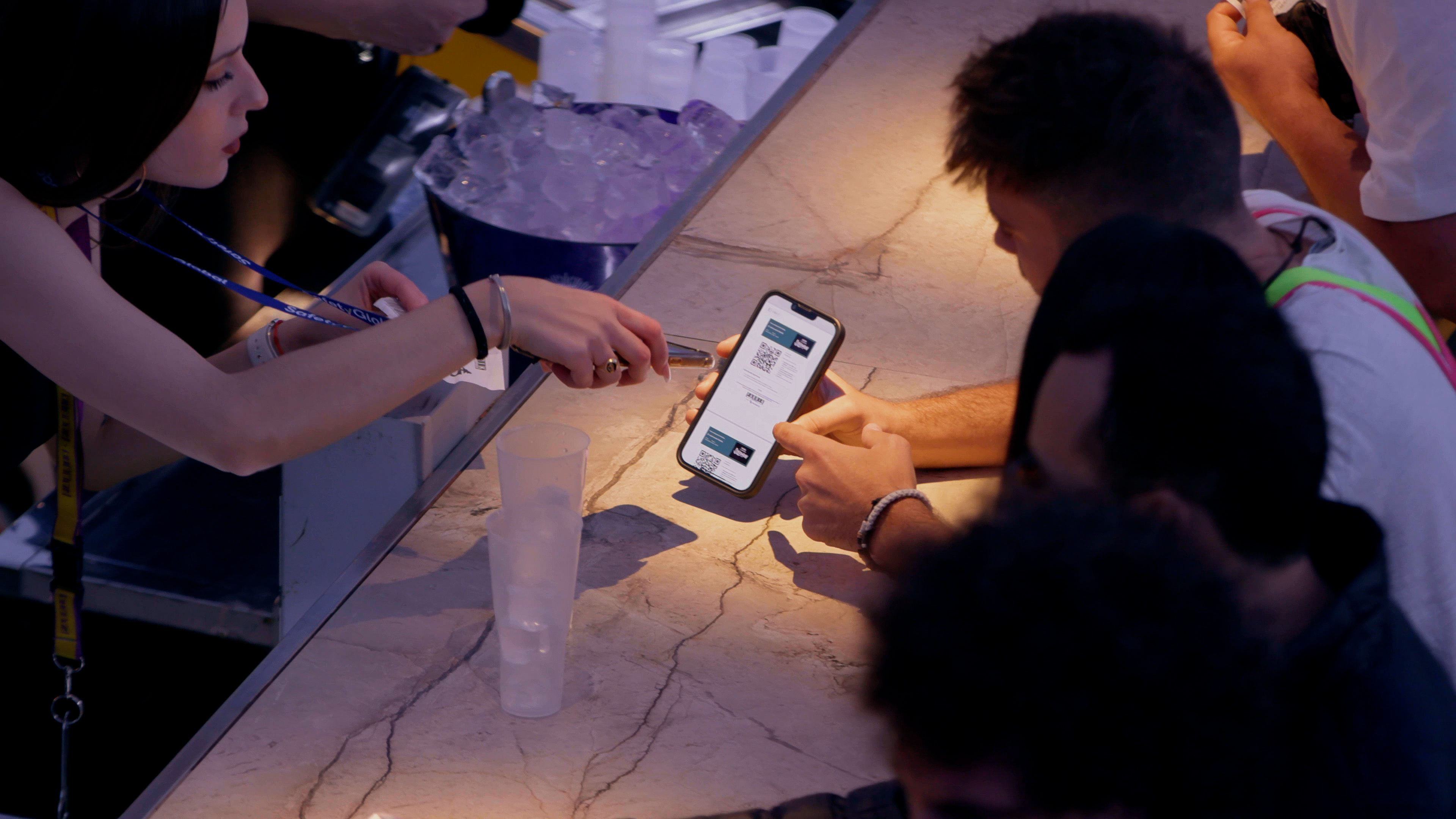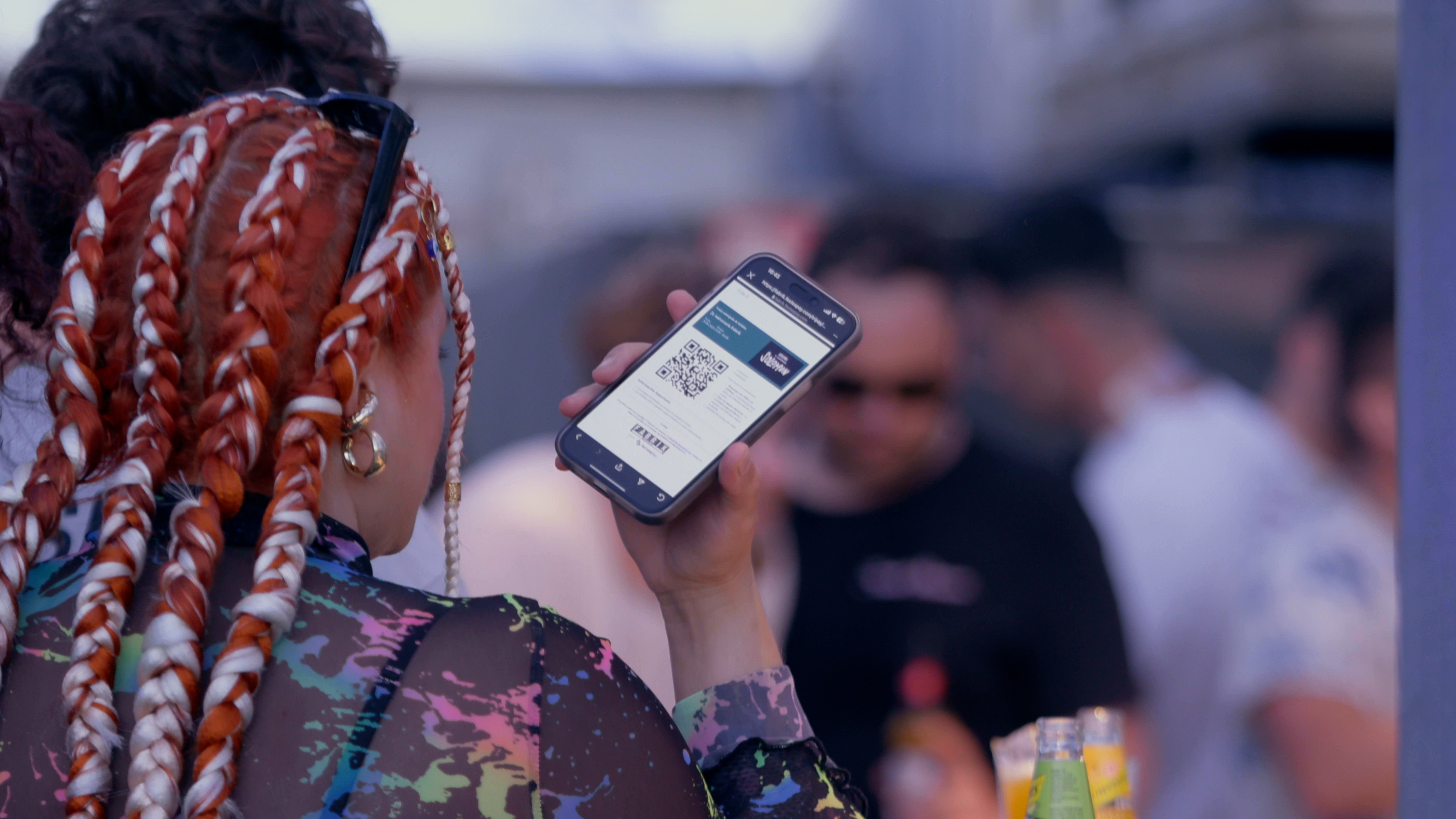McDonald’s saw a 15% revenue increase after introducing self-order kiosks, proving that digital ordering isn’t just about convenience—it’s a powerful sales driver. At big event venues, bars face a similar challenge: long queues, missed sales opportunities, and rushed orders.
But what if we could apply the same ordering techniques to event bars? By leveraging phone-based cashless payments, we can eliminate long lines, increase order value, and optimize the customer experience. Keep reading to discover how McDonald’s strategy can be adapted to solve these challenges and maximize sales at high-volume event bars.
No More Lost Sales Due to Long Queues
Studies show that over 70% of people won’t order if more than seven people are in line, leading to significant lost revenue for event bars. Long wait times not only frustrate customers but also push them to look for alternatives, whether that means skipping a drink altogether or searching for a less crowded bar.
With mobile ordering, this problem disappears. Instead of standing in line, attendees can place their drink orders instantly from their phones, allowing multiple transactions to happen simultaneously. This keeps the bar flowing efficiently, reduces congestion, and ensures customers stay engaged with the event rather than leaving in search of a faster service. By eliminating the bottleneck of physical queues, venues can capture more sales and improve the overall experience for guests.

More Time Means Bigger Orders
When customers aren’t pressured by a long line behind them, they have the freedom to take their time exploring the menu. In a busy bar setting, people often rush through their choices to avoid holding up the line, which means they may skip over higher-value items or forget to add extras. With mobile ordering, however, attendees can browse at their own pace, discovering premium drinks, exclusive combos, and limited-time offers increasing the average ticket size.
Built-in Upselling
Just like McDonald's self-order kiosks suggest add-ons like fries or drinks to complement a burger, your digital ordering system can automatically recommend higher-margin items or bundles based on what’s already in the customer’s cart. This could include suggesting a premium cocktail when a standard drink is selected or offering a special deal for a combo of drinks and shoots. By utilizing data on customer preferences and popular combinations, these suggestions feel personalized, making it more likely that customers will add more to their order.

Improve the UX with digital experiments
One of the major advantages of digital payments is the ability to collect and analyze real-time data, making to track user interactions, purchasing behaviors, and menu engagement. This allow to improve and refine various elements of the digital menu with A/B experiments.
A/B testing different menu layouts, images, and call-to-action buttons is an essential strategy to refine the digital ordering experience and drive higher conversions. Just as McDonald's continuously tweaks its self-order kiosks to improve customer engagement, event promotores can experiment with various designs to see what works best. For instance, testing the placement of high-margin items or highlighting limited-time promotions can make these offerings more noticeable and tempting.
By continuously analyzing these experiments, event managers can fine-tune the experience to maximize sales. This data-driven approach not only increases average ticket size but also improves the overall customer journey, making it more intuitive and rewarding.
¿Do yo want to implement a digital menu at your venue?
Take a look to how our approach has already shown great success at one of Europe’s largest and most renowned clubs, Fabrik, where we implemented a customized phone cashless system. By transitioning to this modern solution, Fabrik speed up payments and bar efficiency, gained better control over customer data, enhanced guest experience, and significantly increase average customer ticket. You can read more about this success story and how it transformed their business here.